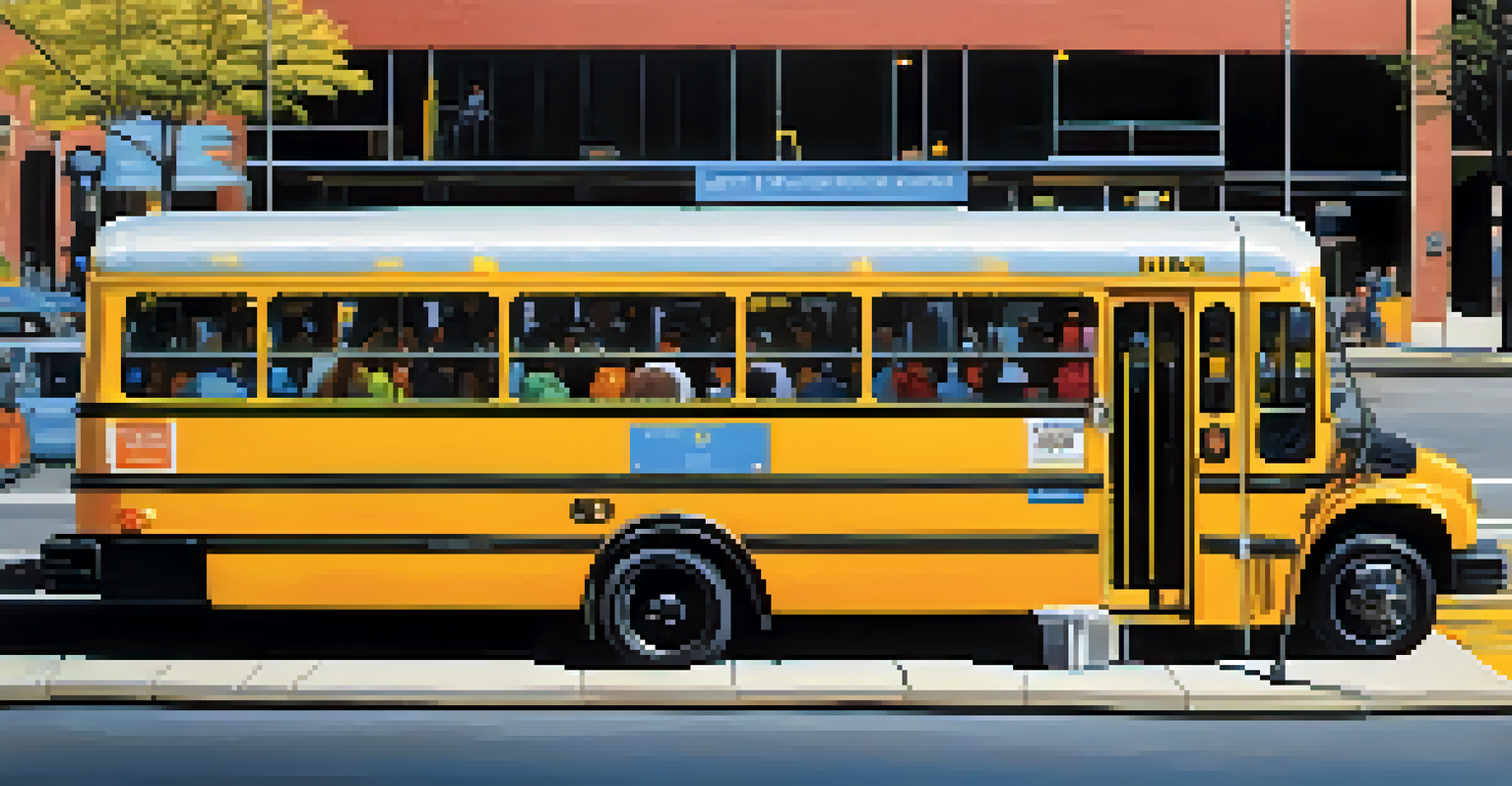Impact of Traffic Congestion on New Jersey's Economy

Understanding Traffic Congestion in New Jersey
Traffic congestion is a common sight in New Jersey, particularly in urban areas. It occurs when the demand for road space exceeds the available capacity, resulting in slow-moving or halted traffic. With a dense population and numerous commuters, New Jersey experiences significant congestion, especially during peak hours.
Traffic congestion is not just an inconvenience; it can be a serious barrier to the economic vitality of a region.
This congestion isn't just a nuisance; it has far-reaching effects on the daily lives of residents. Commuters often find themselves stuck in traffic, leading to longer travel times and increased frustration. This situation can ripple through various aspects of life, including work, family, and leisure activities.
Moreover, the state's infrastructure struggles to keep pace with growing transportation needs. As population numbers rise and more vehicles hit the roads, the existing road systems face mounting pressure, creating a cycle of congestion that seems hard to break.
Economic Costs of Traffic Congestion
Traffic congestion carries significant economic costs for New Jersey. According to studies, it is estimated that congestion costs the state's economy billions annually due to lost productivity and wasted fuel. When workers are stuck in traffic, they are not contributing to the economy, which ultimately affects businesses and services.

Additionally, businesses face higher transportation costs due to delays in deliveries and logistics. When shipments are late, it can disrupt operations, leading to further financial losses. The cumulative effect of these delays can stifle economic growth and innovation in the region.
Traffic Congestion Affects Lives
New Jersey's traffic congestion leads to longer commutes, increased stress, and can hinder job opportunities for residents.
In essence, these economic costs are not just numbers; they translate into real-life implications for both individuals and businesses. From increased prices for goods and services to reduced job opportunities, the effects of congestion are pervasive and concerning.
Impact on Commuters and Quality of Life
For the average commuter, traffic congestion can take a toll on quality of life. Long commutes can lead to stress and fatigue, impacting both physical and mental health. Many individuals find themselves sacrificing valuable time that could be spent with family or engaging in leisure activities.
Public transportation is a critical part of the solution to urban congestion, providing efficient alternatives that benefit both the economy and the environment.
Moreover, the unpredictability of travel times can hinder job opportunities. When individuals cannot rely on consistent travel schedules, it limits their options for employment and career advancement. This can be particularly challenging for those seeking jobs in urban centers where traffic conditions can fluctuate dramatically.
In addition to personal impacts, congestion can also strain community relationships. When people spend more time on the road, they may become less engaged in their local communities, leading to a disconnection from neighbors and local events.
Environmental Consequences of Traffic Congestion
Traffic congestion is not only an economic issue but also an environmental one. As vehicles sit idling in traffic, they emit higher levels of pollutants, contributing to air quality degradation. New Jersey, with its dense population, faces challenges in maintaining clean air standards.
The increased carbon emissions associated with congestion contribute to climate change. As more people rely on personal vehicles, the cumulative effect of these emissions can lead to significant environmental challenges. Addressing these issues is crucial for ensuring a sustainable future for the state.
Economic Impact of Congestion
Traffic congestion costs New Jersey billions annually in lost productivity and increased transportation expenses for businesses.
Furthermore, the environmental impact of congestion can affect public health. Poor air quality is linked to respiratory issues and other health problems, making it essential to consider the long-term consequences of continued traffic congestion.
Role of Public Transportation in Mitigating Congestion
Public transportation offers a viable solution to alleviate traffic congestion in New Jersey. By providing efficient alternatives to personal vehicles, public transit can help reduce the number of cars on the road. This shift not only eases congestion but also lowers emissions and enhances overall air quality.
Investments in public transportation infrastructure can also stimulate economic growth. Improved transit options can attract businesses and residents to areas with accessible transportation, creating a ripple effect of development and opportunity. Cities that prioritize public transit often see a boost in local economies.
Moreover, public transportation can enhance social equity by providing access to jobs and services for those who may not have reliable personal transportation. By promoting inclusive transit options, New Jersey can foster a more connected and economically vibrant community.
Technological Innovations to Reduce Congestion
Advancements in technology present exciting opportunities to tackle traffic congestion in New Jersey. Smart traffic management systems, for instance, can optimize traffic flow by adjusting signals based on real-time data. This means that traffic lights can change in response to actual conditions, reducing wait times and improving overall efficiency.
Furthermore, the rise of ride-sharing apps has changed the way people think about commuting. By encouraging carpooling and shared rides, these platforms can significantly decrease the number of vehicles on the road. As more individuals adopt this mindset, it could lead to a notable reduction in congestion.
Public Transit Can Ease Congestion
Investing in public transportation infrastructure can reduce the number of cars on the road and improve air quality.
Additionally, emerging technologies, such as autonomous vehicles, hold the promise of reshaping the transportation landscape. While still in development, these innovations could ultimately lead to more efficient road usage and fewer traffic jams.
Policy Recommendations for Addressing Congestion
To effectively combat traffic congestion, policymakers need to implement comprehensive strategies. One recommendation is to invest in expanding and improving public transportation infrastructure, making it a more appealing option for commuters. By enhancing the efficiency and reliability of transit systems, more people may opt for public transport over personal vehicles.
Moreover, introducing congestion pricing in highly trafficked areas could encourage drivers to reconsider their travel options. By charging fees during peak traffic times, cities can incentivize carpooling, flexible work hours, or alternative routes, ultimately reducing congestion levels.

Lastly, fostering community engagement in transportation planning is essential. When local residents have a voice in decision-making, they can contribute valuable insights and solutions, leading to more effective policies that address the unique challenges of traffic congestion in New Jersey.